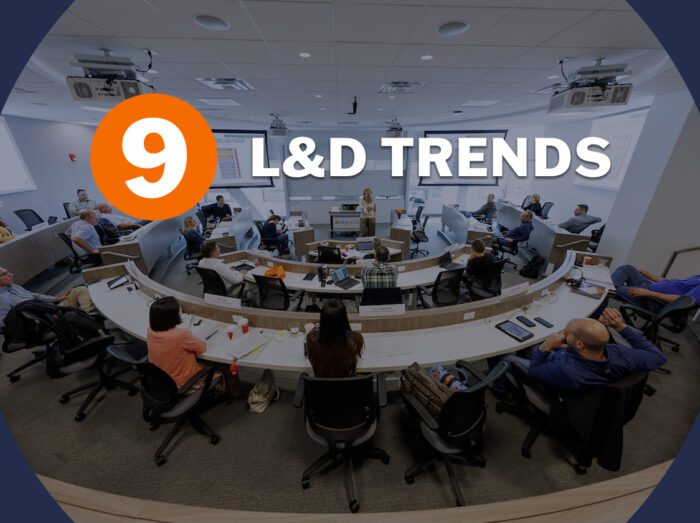In today’s fast-paced world, lifelong learning is the key differentiator of successful companies. As the world continues to operate in a volatile, uncertain, complex, and ambiguous (VUCA) environment, learning & development (L&D) and talent management leaders across industries play a vital role in building organizations’ abilities to adapt and succeed. Here are nine trends in L&D that we have uncovered in our daily work with L&D, HR and talent leaders across industries:
-
Broader and Simpler L&D/Talent Management
Clients are looking for L&D partners who can provide both breadth and depth of expertise with fewer vendors, making engagement clearer and easier. We heard from one L&D leader who was looking for a partner who can provide more types of services (Assessment, Architectures, Advisory, Design, Development, Delivery and Coaching) through fewer vendors, but deeper levels of possibilities.
-
The Value of Paradoxical Thinking
The ability to think and act on paradoxes, dilemmas, and tensions is more valuable today than ever before, emphasizing the importance of a leader’s ability to process and think locally and globally, collaboratively and competitively.
-
Urgency for Change
L&D leaders are facing the urgency to facilitate change, not only within organizations but also more broadly in society and the world. In dealing with critical challenges such as sustainability, humanity and technology disruption, learning and adaptation will be key to our future existence.
-
Capability Accelerator
L&D and talent management have become increasingly focused on being the strategic capability builder within organizations; using skill building to deliver on strategy and accelerate the strategic transformation necessary in an ever-evolving world.
-
Technology/Digital-Focused and Human-Centric Leaders
L&D leaders are focusing on building solutions that develop leaders’ human-centric skills (empathy, influence, emotional intelligence) while also building new digital innovation skills (business models, technology adoption, ChatGPT, AI).
-
Stakeholder Value
There is a trend of enabling leaders to focus on both shareholder value and stakeholder value, emphasizing the importance of multi-faceted value creation for future sustainability.
-
Critical Thinking and Decision Making
A leader’s ability to analyze situations, utilize data to inform their process, and make strategic decisions is a key capability, particularly with the increased requirement of speed that leaders need to operate within.
-
The Language of Finance
Financial acumen remains a critical skill for aspiring leaders to be able to understand the levers to pull for profitability, if a new venture is worthwhile or what capital is required for sustainable ventures – just to name a few.
-
Communication is Key
Leaders who can analyze a situation, know the best way to communicate through the increasing number of modalities available today, and build connection and influence with teams, clients and others are key performers in today’s world.
At Darden, we are fortunate to engage with world-class faculty and a diverse group of clients across Military/Government, Corporations and Associations to observe and engage with trends on critical capability development at every level of an organization. It is through this depth of experience we are able to partner with our clients to continually innovate and deliver learning solutions that have a measurable impact.




